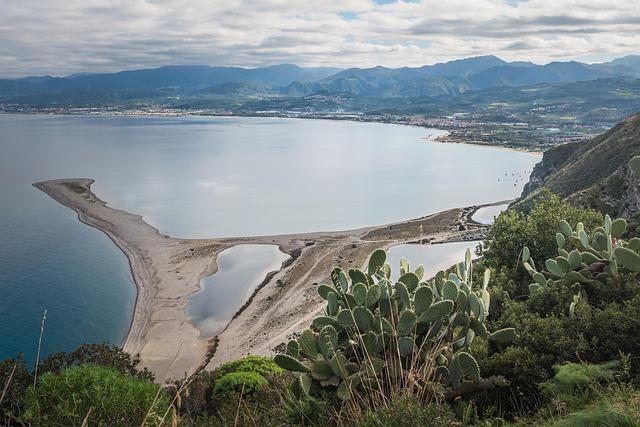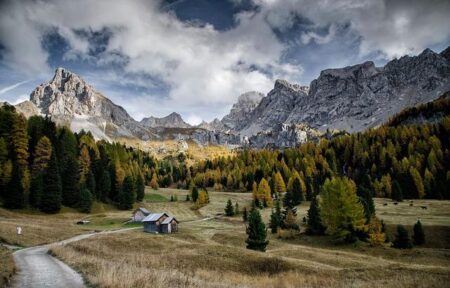A recent study conducted by researchers at Rome La Sapienza University has identified the 10 best places to live in Italy, shedding light on cities and towns that combine quality of life, economic opportunities, and cultural richness. Published by Forbes, the report offers a comprehensive analysis based on factors such as healthcare, education, employment, and environmental quality. As Italy continues to attract both domestic and international residents seeking vibrant communities and better living standards, this study provides valuable insights into the top destinations that stand out across the country.
Top Italian Cities Offer Unique Blends of Culture Quality of Life and Economic Opportunity
Italy’s urban landscapes are more than just beautiful backdrops; they represent dynamic hubs where culture, quality of life, and economic vitality intertwine uniquely. Cities like Bologna boast a rich tapestry of history and culinary excellence, while Milan stands out as a global fashion and financial powerhouse. Meanwhile, Florence’s Renaissance charm coexists seamlessly with vibrant modern industries, attracting both creatives and entrepreneurs. This diverse range of cities reflects varying lifestyles and promises for residents, making Italy an enticing destination for those seeking not only comfort but also professional growth.
Below is a snapshot of select Italian cities with key indicators showcasing their distinctive blends:
| City | Culture & Heritage | Quality of Life (out of 10) | Economic Opportunity |
|---|---|---|---|
| Turin | Historic museums & modern architecture | 8.2 | Automotive & tech industries |
| Bologna | Medieval center & renowned culinary scene | 8.7 | Education & food innovation |
| Milan | Fashion capital & art galleries | 7.9 | Finance & design sectors |
| Florence | Renaissance art & architecture | 8.4 | Tourism & creative industries |
Study Reveals Lesser-Known Towns with Exceptional Livability and Community Spirit
Beyond the well-trodden paths of Italy’s famous cities, recent findings highlight several lesser-known towns that offer extraordinary quality of life combined with vibrant community dynamics. These hidden gems, often overlooked in mainstream rankings, pride themselves on a balanced pace of life, strong social ties, and accessible local amenities. From the serene landscapes of Ascoli Piceno to the rich cultural tapestry of Cefalù, residents enjoy not only natural beauty but also festivals, artisanal markets, and educational opportunities that foster a strong sense of belonging.
Key elements contributing to these towns’ exceptional livability include:
- Affordable housing coupled with sustainable urban planning
- Robust public services and effective community engagement
- Rich historical heritage seamlessly integrated with modern infrastructure
| Town | Region | Highlight |
|---|---|---|
| Ascoli Piceno | Marche | Medieval architecture & lively piazzas |
| Cefalù | Sicily | Coastal charm & cultural festivals |
| Gubbio | Umbria | Historic events and scenic views |
| Vibo Valentia | Calabria | Strong community spirit & local crafts |
Expert Recommendations Highlight Importance of Infrastructure Education and Healthcare Access
Leading experts from Rome La Sapienza University emphasize that robust infrastructure combined with accessible healthcare services serve as critical determinants for quality living standards across Italy. Their analysis reveals that beyond the charm of historic cities and scenic landscapes, the true allure lies in well-connected transport systems, reliable utilities, and proximity to medical facilities. Regions investing in these areas significantly enhance residents’ daily experiences, ensuring safety, efficiency, and overall well-being.
Key recommendations include prioritizing community-centered initiatives that improve both physical and social infrastructure. The study highlights several factors deemed essential for future development plans:
- Integrated public transportation networks to reduce commute times and support sustainable mobility
- Expanded healthcare access through modern clinics and telemedicine integration
- Smart urban planning fostering walkable neighborhoods and green public spaces
- Investment in digital infrastructure guaranteeing high-speed internet across urban and rural areas
| Infrastructure Element | Impact Level | Recommended Focus Area |
|---|---|---|
| Public Transport | High | Expand rail and bus services |
| Healthcare Facilities | Critical | Increase doctors & telehealth |
| Digital Connectivity | Moderate | Improve rural broadband |
| Urban Green Spaces | Supportive | Develop parks and trails |
Insights and Conclusions
In conclusion, the recent study conducted by Rome La Sapienza University offers valuable insights into the most desirable places to live in Italy, blending factors such as quality of life, economic opportunities, and cultural richness. As highlighted in Forbes’ coverage, these top 10 locations represent a diverse array of environments, from vibrant urban centers to tranquil coastal towns, each with unique attributes that appeal to different lifestyles. Whether considering relocation or simply exploring Italy’s varied regions, this data-driven ranking provides a compelling snapshot of where residents can find the best balance of comfort, community, and opportunity in one of Europe’s most beloved countries.




